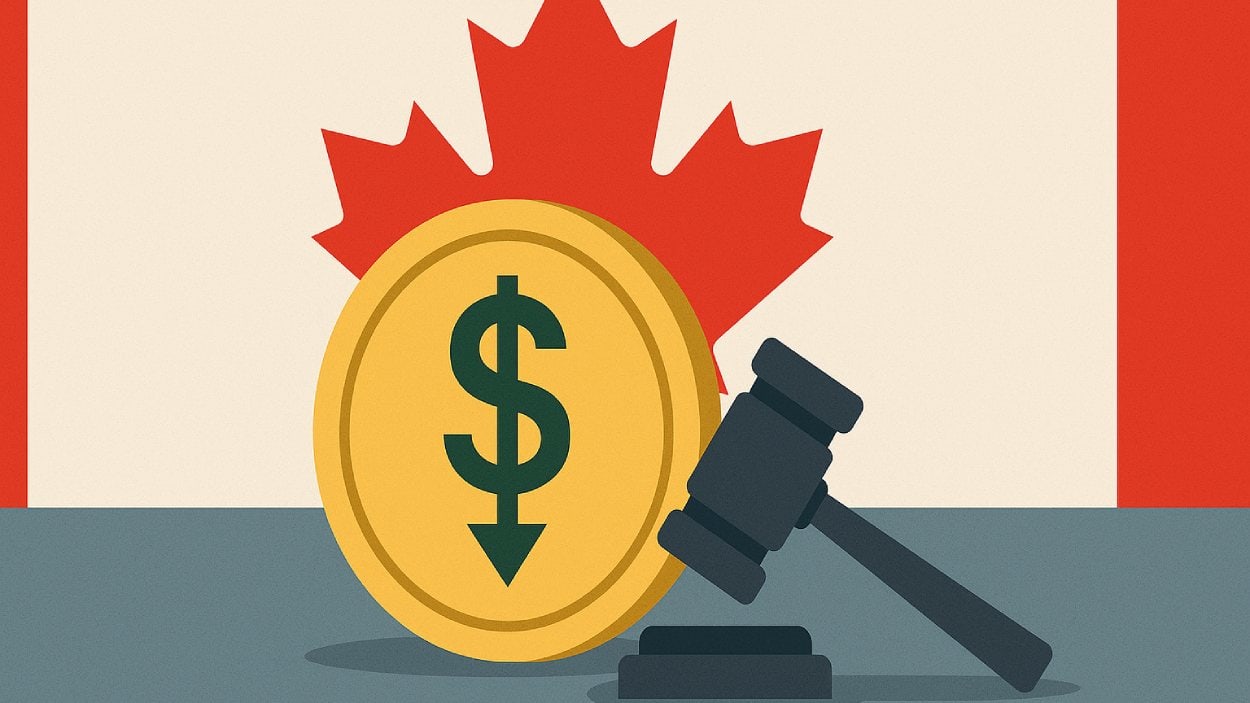The Canadian government has announced a bold plan in its 2025 federal budget to introduce a regulatory framework for fiat backed stablecoins, backed by an initial $10 million funding allocation.
Key Takeaways
- The 2025 federal budget sets out legislation requiring stablecoin issuers in Canada to hold full reserves, implement redemption policies and establish risk management and data protection systems.
- An allocation of up to $10 million over 2026 to 2027 is earmarked for the Bank of Canada to administer the new regime, with estimated annual oversight costs of about $5 million to be recovered via issuer fees.
- The legislation will amend the Retail Payment Activities Act and aim to modernise Canada’s digital payments infrastructure, implicitly supporting private stablecoins rather than a wholly state issued digital currency.
- The move brings Canada into alignment with global efforts including the U.S. GENIUS Act and Europe’s Markets in Crypto Assets Regulation (MiCA) to regulate stablecoins and bolster trust in crypto payments.
What Happened?
In its 2025 federal budget, the Canadian government declared its intention to launch legislation that will regulate the issuance of fiat backed stablecoins by non prudentially supervised issuers operating in Canada. The proposed framework requires issuers to maintain adequate reserves, establish clear redemption rules, implement robust risk management protocols and protect personal and financial data of holders.
Alongside this, the Bank of Canada will receive up to $10 million from government remittances for initial oversight work beginning 2026 to 2027, with subsequent annual supervision costs of about $5 million to be covered by fees on issuers. The budget also signals amendments to the Retail Payment Activities Act to bring payment service providers that use stablecoins under the regulatory scope.
🇨🇦 Canada just made a big step forward.
— Stand With Crypto Canada 🇨🇦 (@StandWCrypto_CA) November 4, 2025
Today’s federal budget includes new guidance on stablecoin regulation, signaling progress toward embracing faster, cheaper, and borderless payments.
With 60,000 advocates strong, Stand with Crypto Canada will continue to be a driving… pic.twitter.com/C0ZiO3GLsR
Why the Change Now?
The regulation of stablecoins has increasingly become a priority as digital asset usage rises and as other jurisdictions move ahead. Analysts note that more than 97 percent of the global stablecoin market is denominated in U.S. dollars, leaving Canada at risk of reliance on foreign issued tokens.
By putting in place a clear regulatory regime, the government aims to:
- Improve trust in digital payments for Canadians and businesses.
- Prevent capital outflows to foreign issued stablecoins.
- Support innovation by enabling Canadian issued stablecoins with proper oversight.
- Shore up financial system and national security protections by establishing standards for issuers
What the Framework Will Require?
Under the new legislation, stablecoin issuers will face a series of obligations:
- Reserve holdings: Issuers must hold full or “adequate” reserves likely cash or high quality liquid assets matched to stablecoins outstanding.
- Redemption rights: Stablecoin holders must have a clear process to redeem tokens at face value.
- Risk and operational controls: Issuers must implement risk management frameworks, audit and disclosure routines and have safeguards for cyber and operational risk.
- Data protection and security: The legislation will include national security safeguards and protections for personal and financial information.
- Payment services amendment: Entities using stablecoins in payments will face oversight as payment service providers.
What It Means for the Canadian Crypto Market?
- For Canadian fintechs and issuers, the framework offers clarity and a legal path to issue stablecoins with domestic backing.
- For consumers and businesses, it bolsters trust in the stability of tokens used in payments, reducing risk of sudden crashes.
- For the financial system and regulators, it aligns Canada with global peers and provides tools to monitor systemic risk.
- For the concept of a government issued digital currency, the direction suggests a preference for private stablecoins under regulation, rather than a national digital currency.
CoinLaw’s Takeaway
In my experience following digital asset policy, this move by the Canadian government signals a turning point. By committing money and legislative intent in the 2025 budget, Ottawa is acknowledging that stablecoins are not fringe crypto playthings they are becoming payment rails and part of financial system infrastructure.
For me, the most encouraging point is that Canada is opting for regulation to enable innovation rather than blocking the space entirely. That said, much work remains. The actual draft legislation, definitions of “adequate reserve,” how redemption will work in practice and how enforcement will be structured are all still unknown. Until those are clear, issuers and investors remain in a grey zone. But the direction is clear: stablecoins are coming under Canadian oversight and that will help raise the bar for safety, trust and domestic innovation in this fast moving space.

























































